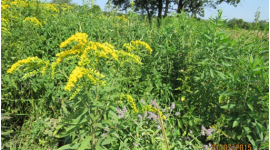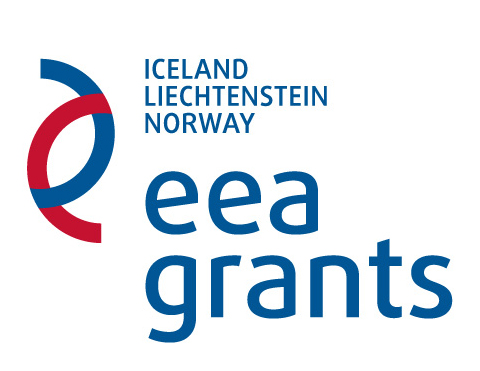
Containing the spread of Goldenrod
Goldenrod is a highly aggressive, non-native plant that spreads very quickly through the Ljubljana Marsh. Because it spreads vigorously and takes over the habitat of other plants, which compose the habitat type on the marsh and the unique biodiversity of autochthonous plants, we tested three methods for containing the spread of this plant species. According to some assessments and surveys, Goldenrod plants have spread across 500 hectares of wetland and continue to spread aggressively every year. These attempts at wetland revitalisation have been carried out across a surface area of 20 hectares. We have selected areas where Goldenrod grows in larger distributions, practically as a monoculture, and where agriculture has been temporarily suspended.
A smaller, aggressively overgrown area was turned into pasture land for goats, who successfully grazed through the entire growth. Other areas were mulched or mown just before the Goldenrod flowered. As we mulch or mow these areas again later this year, we expect the plants to weaken and become exhausted the following year, through maintenance or agricultural use of these areas.
Obstacles to prevent the use of areas as pasture land are primarily that of distance from the farm and the expensive equipment required to maintain the pasture. However, we consider this method very appropriate for smaller, rounded areas. By mulching or mowing the remaining area, we cleared it of growth and prepared the ground for the revival of the autochthonous meadow, which is the aim of these nature conservation measures. This was followed by sowing autochthonous marsh grasses and herbaceous plants. Goldenrod plants will nevertheless grow from the root system, but we will repeat the mulching in the autumn. We expect that, with these measures, grass seeds will have the best conditions to develop and compete with the Goldenrod in the following years. By mowing and removing the plant mass, we established the right conditions for sowing autochthonous seeds. The method is similar to mulching, but the Goldenrod plant mass is removed, thereby establishing contact between the sown seed and the soil more quickly. This will be followed by autumn mowing. Before any intervention was made, experts from the Research Centre of the Slovenian Academy of Sciences and Arts conducted a botanical survey or record of present plants, and they will conduct an additional survey after testing these methods. The extensive operational work on wetland surfaces is conducted under the organisation and implementation of experts at the Ljubljana Institute of the Chamber of Agriculture and Forestry of Slovenia.
We expect and hope that, with the mutual interest shared by those using wetland areas as well as the general public, other areas – which are currently abandoned agricultural land – will become revitalised and maintained using these methods.


